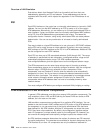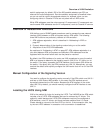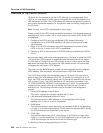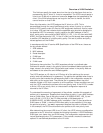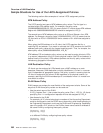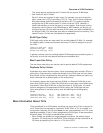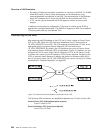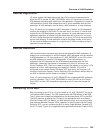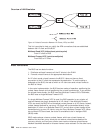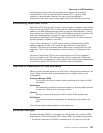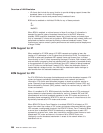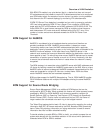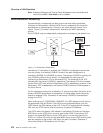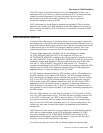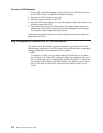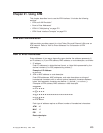
This list is provided to help you clarify the ATM connections that are established
between the LE client and the BUS:
Multicast Send VCC (bidirectional point-to-point)
From LE client to BUS
Multicast Forward VCC (point-to-multipoint)
From BUS to LE client
BUS Functions
The BUS has two basic functions:
1. Distribute multicast frames to all the LE clients in the ELAN
2. Forward unicast frames to the appropriate destinations
An LE client sends unicast frames to the BUS if it does not have a direct
connection to the LE client that represents the destination. To avoid creating a
bottleneck at the BUS, the rate at which an LE client can send unicast frames to
the BUS is limited.
In the router implementation, the BUS has two modes of operation: partitioning the
unicast frame domain and not partitioning the unicast frame domain. If you partition
the unicast frame domain, the BUS uses two Multicast Forward VCCs. Otherwise,
the BUS uses a single Multicast Forward VCC.
If a single Multicast Forward VCC is used, the BUS operation is very simple; all
received frames are simply forwarded to all LE clients. If two Multicast Forward
VCCs are used, the BUS will not broadcast unicast frames to all LE clients; instead,
unicast frames destined for non-proxy LE clients will be transmitted directly to the
destination LE client on a Multicast Send VCC, and all other unicast frames will be
transmitted only to proxy LE clients, using the Proxy Multicast Forward VCC. When
two multicast VCCs are used, the router is considered to be in intelligent BUS
(IBUS) mode.
IBUS mode reduces nuisance unicast frames, which are unicast frames not
destined for the client; proxy clients do not receive unicast frames destined for
non-proxy clients, and non-proxy clients never receive nuisance unicast frames.
Network bandwidth devoted to nuisance frames is also reduced. On the other hand,
Figure 16. Default Connection Between LE Clients (LECs) and BUS
Overview of LAN Emulation
266
MRS V3.2 Software User’s Guide



